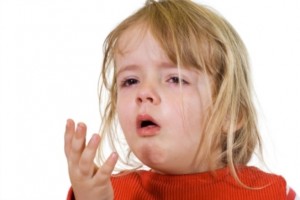
One of the interesting facts in Homeopathy’s history relates to its ability to manage infectious diseases that were prevalent in the 1800’s. There were accounts of homeopathic hospitals having better treatment outcomes during the cholera epidemic than their allopathic counterparts1. For example, to show how effective homoeopathy was in treating cholera patients, one homeopathic doctor had 154 patients with cholera, and only 6 died. In an allopathic hospital there were 284 patients with cholera and 122 had died. In the private houses there were 1,217 patients treated allopathically, and 699 died. Another doctor using homoeopathy, had 631 patients, and 31 died.
These were staggering results for homeopathy. It showed how effective homeopathy was in treating such a serious life threatening condition that it spurred homeopathy’s popularity in treating both acute and chronic disease.
Now today, we are not dealing with cholera, but we are dealing with sore throats, coughs, colds and flu infections and if homeopathy was so effective back then, it can be a viable alternative to having to go to your local doctor and getting antibiotics now.
Homeopathy’s Approach To Treating Disease
There are two reasons one becomes ill from an infection with a bacteria or virus: one, your exposure to the organism, and two, one’s resistance to that organism. Common logic is that the pathogen “causes” your disease. So taking your antibiotic is supposed to “kill” the pathogen. It may address point one, but does nothing to address point two. It is your resistance that determines how “susceptible” you are at getting sick. The lower your resistance, the more susceptible you are at picking up those dreaded lurgies.
It is this susceptibility to getting sick that homeopathy addresses. By strengthening your resistance, you are less likely to become sick as your body is more equipped to deal with any exposure to those pathogens.
I see this everyday in my practice. Particularly treating kids, as they play with other children who are not sick in their day-care, kindy or primary school environments and unknowingly spread the bugs to them. Those kids go home and infect the rest of the family who then fall ill.
It becomes a costly exercise when the toddler falls repeatedly ill, as a parent must take time off work to attend to them.
Parents bring their children in for treatment for their recurring infections and I see a turn-a-round in the frequency that they fall ill and having to have days off school.
I have found that as children start to improve in their well-being with homeopathic treatment, their susceptibility to catching these bugs become less. Parents often comment that whilst before their child may have been the first one sick in the family when these bugs are going round, they now seem more robust so that they either don’t fall sick or if they do, come down with a milder illness that passes much quicker.
Here is an interesting study comparing the effectiveness of homeopathic medicines as an alternative to antibiotics in the treatment of acute middle ear infections and upper respiratory tract infections:
http://www.ncbi.nlm.nih.gov/pmc/articles/PMC3833578/
Let me know what you think.
If you or your child repeatedly falls sick with these infections, and would like to know more on how homeopathy could be helpful for you this winter, please call me and I would be happy discuss this with you. You can check out my page on Successful Children’s Cases Treated With Homeopathy as an example.
Reference:
- Samuel Hahnemann, His Life and Work, R. Haehl pg. 173 -174